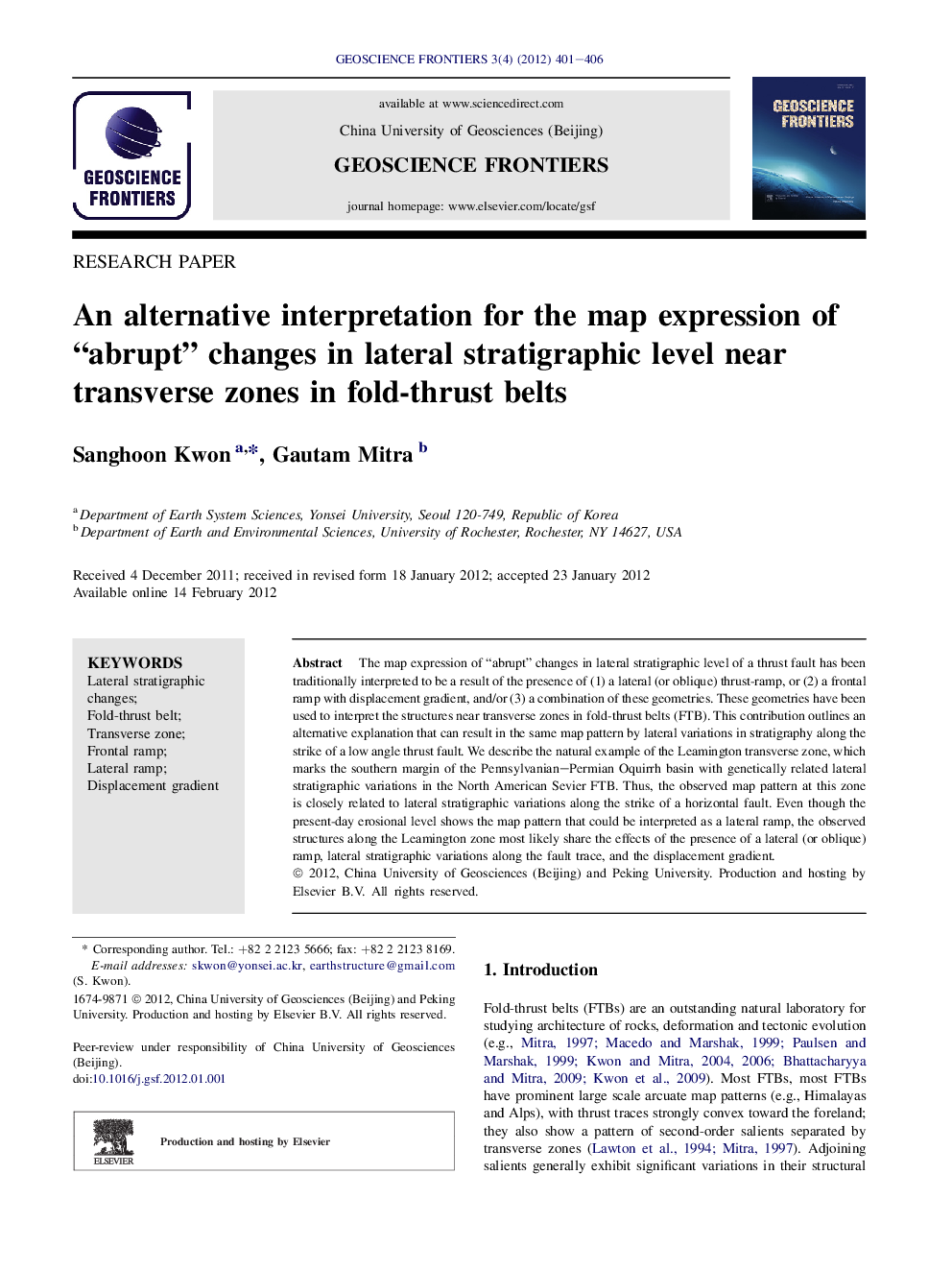| Article ID | Journal | Published Year | Pages | File Type |
|---|---|---|---|---|
| 4681906 | Geoscience Frontiers | 2012 | 6 Pages |
The map expression of “abrupt” changes in lateral stratigraphic level of a thrust fault has been traditionally interpreted to be a result of the presence of (1) a lateral (or oblique) thrust-ramp, or (2) a frontal ramp with displacement gradient, and/or (3) a combination of these geometries. These geometries have been used to interpret the structures near transverse zones in fold-thrust belts (FTB). This contribution outlines an alternative explanation that can result in the same map pattern by lateral variations in stratigraphy along the strike of a low angle thrust fault. We describe the natural example of the Leamington transverse zone, which marks the southern margin of the Pennsylvanian–Permian Oquirrh basin with genetically related lateral stratigraphic variations in the North American Sevier FTB. Thus, the observed map pattern at this zone is closely related to lateral stratigraphic variations along the strike of a horizontal fault. Even though the present-day erosional level shows the map pattern that could be interpreted as a lateral ramp, the observed structures along the Leamington zone most likely share the effects of the presence of a lateral (or oblique) ramp, lateral stratigraphic variations along the fault trace, and the displacement gradient.
Graphical abstractFigure optionsDownload full-size imageDownload as PowerPoint slideHighlights► Map expression of “abrupt” changes in lateral stratigraphic level of a thrust fault. ► New interpretation along a frontal-ramp without vertical-axis rotations. ► “Abrupt” changes controlled by lateral (or oblique) ramp, stratigraphy along a fault, and displacement gradients on a frontal ramp.
